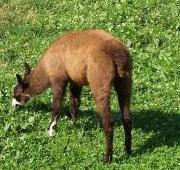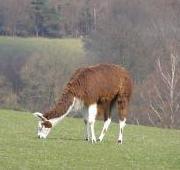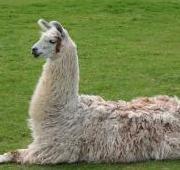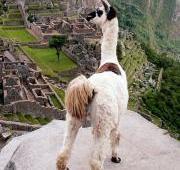 The llama is thought to have originated in North America around 40 million years ago and the llama is believed to have then migrated to South America and Asia around 3 million years ago, before the American and Asian continents finally separated at Alaska. The llama is thought to have become extinct from North America during the ice age.
The llama is thought to have originated in North America around 40 million years ago and the llama is believed to have then migrated to South America and Asia around 3 million years ago, before the American and Asian continents finally separated at Alaska. The llama is thought to have become extinct from North America during the ice age. Today the llama is most commonly found in the Andes mountain region of South America where the llama was kept as a pack animal by the ancient Inca people. Llamas are used for meat, wool, skin and for transporting heavy loads (a little like donkeys).
Today the llama is most commonly found in the Andes mountain region of South America where the llama was kept as a pack animal by the ancient Inca people. Llamas are used for meat, wool, skin and for transporting heavy loads (a little like donkeys).


Female llamas give birth to baby llamas (known as crias) standing up. The gestation period for a llama is between 11 and 12 months and the birth of the cria is usually over within half an hour. Baby llamas are generally standing up and attempting to walk within an hour of birth. Llama mating takes place throughout the year and baby llamas tend to be born in the morning when the weather is warm. This is believed to increase the fertility rate of the cria.
The llama is a herbivore and gets most of its nutrition from grass, leaves and young shoots. Llamas also do not have the same water retaining properties of their camel cousins, meaning that the llama must drink more often and llamas therefore prefer to be close to water.

